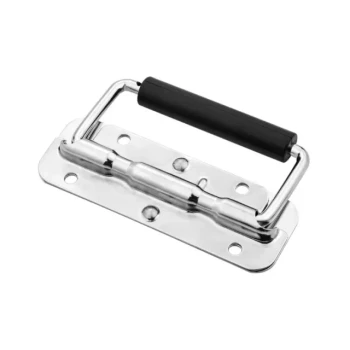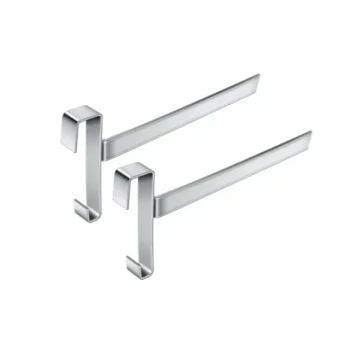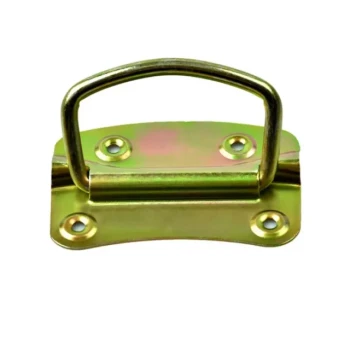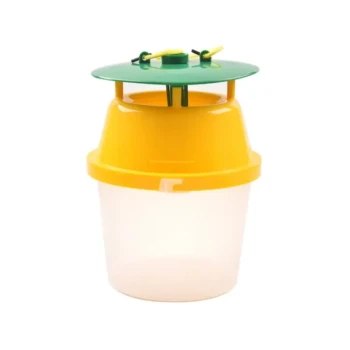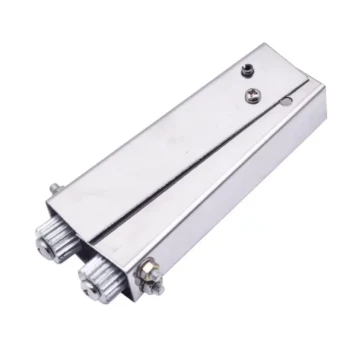Observing bees uncapping their brood is often a sign of a highly desirable trait known as hygienic behavior. This is a sophisticated, genetically-driven defense mechanism where worker bees identify and remove unhealthy pupae from their capped cells. This proactive housekeeping helps the colony defend itself against diseases and pests.
While your first instinct may be concern, seeing bees uncap brood is typically a positive indicator of your colony's health. It demonstrates their innate ability to combat threats like Varroa mites and brood diseases before they can spread.
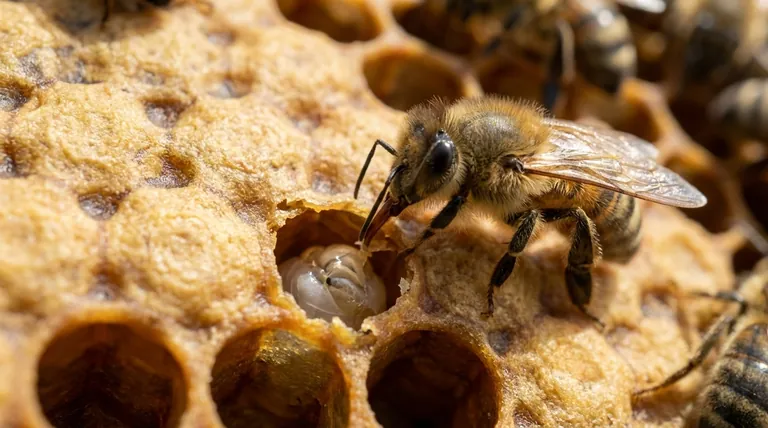
The Primary Cause: A Sign of Good Genetics
The most common and beneficial reason for uncapping brood is a direct result of your colony's genetic programming. Modern queen breeders actively select for this trait to create more resilient bee populations.
What is Hygienic Behavior?
Hygienic behavior is a two-step process. First, specific worker bees detect a problem with a developing bee inside a capped cell, such as disease or mite infestation.
Second, they uncap that specific cell and physically remove the infected or infested pupa. This targeted removal acts as a form of social immunity, stopping a problem before it can endanger the entire colony.
Targeting Varroa Mites
Varroa mites are one of the most significant threats to honey bee health. These mites reproduce within the capped brood cells, feeding on the developing pupa.
Hygienic bees can detect the presence of mites within the cell. By uncapping the cell and removing the pupa, they disrupt the mite's reproductive cycle, thereby keeping the overall mite population in the hive lower.
Removing Diseased Brood
Colonies also use this behavior to control the spread of bacterial and fungal diseases, such as chalkbrood or American Foulbrood (AFB).
Bees can sense the chemical signals from infected pupae. Removing them from the hive reduces the pathogen load and prevents a widespread outbreak, protecting the next generation of bees.
When Uncapping Can Signal a Problem
While hygienic behavior is the most frequent cause, there are less common, problematic reasons for uncapping brood that you must be able to recognize. The key difference is often the appearance of the comb.
Pest Infestations
Pests like wax moths or small hive beetles can cause damage that resembles uncapping.
Wax moth larvae tunnel through the comb, leaving behind webbing and creating a shredded, messy appearance. This is very different from the neat, targeted uncapping performed by hygienic bees.
Brood Starvation or Chilling
If a colony is suffering from a sudden lack of nectar or pollen, or if a cold snap causes the cluster to contract, they may not be able to care for all the brood.
In this case, bees may uncap and consume the larvae to recycle the protein and energy, a behavior sometimes called cannibalism. You would typically see this in large patches on the outer edges of the brood nest, often accompanied by a noticeable lack of food stores in the hive.
How to Interpret What You See
Distinguishing between beneficial hygiene and a sign of trouble is a critical beekeeping skill. It requires observing not just the behavior itself, but the context and condition of the comb.
Healthy Hygienic Behavior
This looks precise and targeted. You will see individual cells being uncapped, often scattered across the frame. The cappings are opened neatly, and the pupa is removed cleanly without damaging adjacent cells.
Problematic Uncapping
This often looks messy and destructive. Look for ragged, chewed-up cappings, signs of webbing (wax moths), or slimy residue (hive beetle). If large, contiguous patches of brood are being removed, it points away from hygiene and toward a broader colony stressor like starvation.
Making the Right Choice for Your Goal
Your next steps depend entirely on accurately diagnosing the cause of the uncapping.
- If you see bees selectively uncapping and removing individual pupae: This is a strong indicator of beneficial hygienic behavior; no action is needed, and you can be confident in your colony's genetics.
- If you see ragged, shredded cappings with silky webbing: Investigate immediately for a wax moth infestation and take appropriate pest management steps.
- If you see large patches of removed brood, especially near the edges of the frame: Check the colony's food stores immediately to rule out starvation.
Understanding this behavior moves you from simply keeping bees to truly managing a healthy, resilient colony.
Summary Table:
| Cause of Uncapping | Appearance & Key Indicators | Is it a Problem? |
|---|---|---|
| Hygienic Behavior | Neat, targeted uncapping of individual cells; pupae removed cleanly. | No - A highly desirable trait. |
| Varroa Mite Infestation | Bees target mite-infested pupae to disrupt the mite's lifecycle. | No - A beneficial defense mechanism. |
| Pest Infestation (e.g., Wax Moths) | Ragged, shredded cappings; silky webbing; messy appearance. | Yes - Requires immediate pest management. |
| Brood Starvation/Chilling | Large, contiguous patches of removed brood, often on frame edges. | Yes - Indicates colony stress; check food stores. |
Equip Your Apiary for Success with HONESTBEE
Seeing hygienic behavior is a sign of a strong colony. Support your bees' natural defenses with high-quality, durable equipment designed for commercial-scale beekeeping.
HONESTBEE supplies beekeeping supplies and equipment to commercial apiaries and beekeeping equipment distributors through wholesale-focused operations. We help you build resilient, productive operations with:
- Durable Hive Components: Built to withstand the elements and heavy use.
- Efficient Extraction & Processing Equipment: Maximize your honey yield and operational efficiency.
- Protective Gear & Tools: Keep your team safe and productive during hive inspections.
Ready to strengthen your operation? Let's discuss your specific needs and how our products can contribute to your bottom line.
Contact HONESTBEE today for wholesale pricing and expert support.
Visual Guide
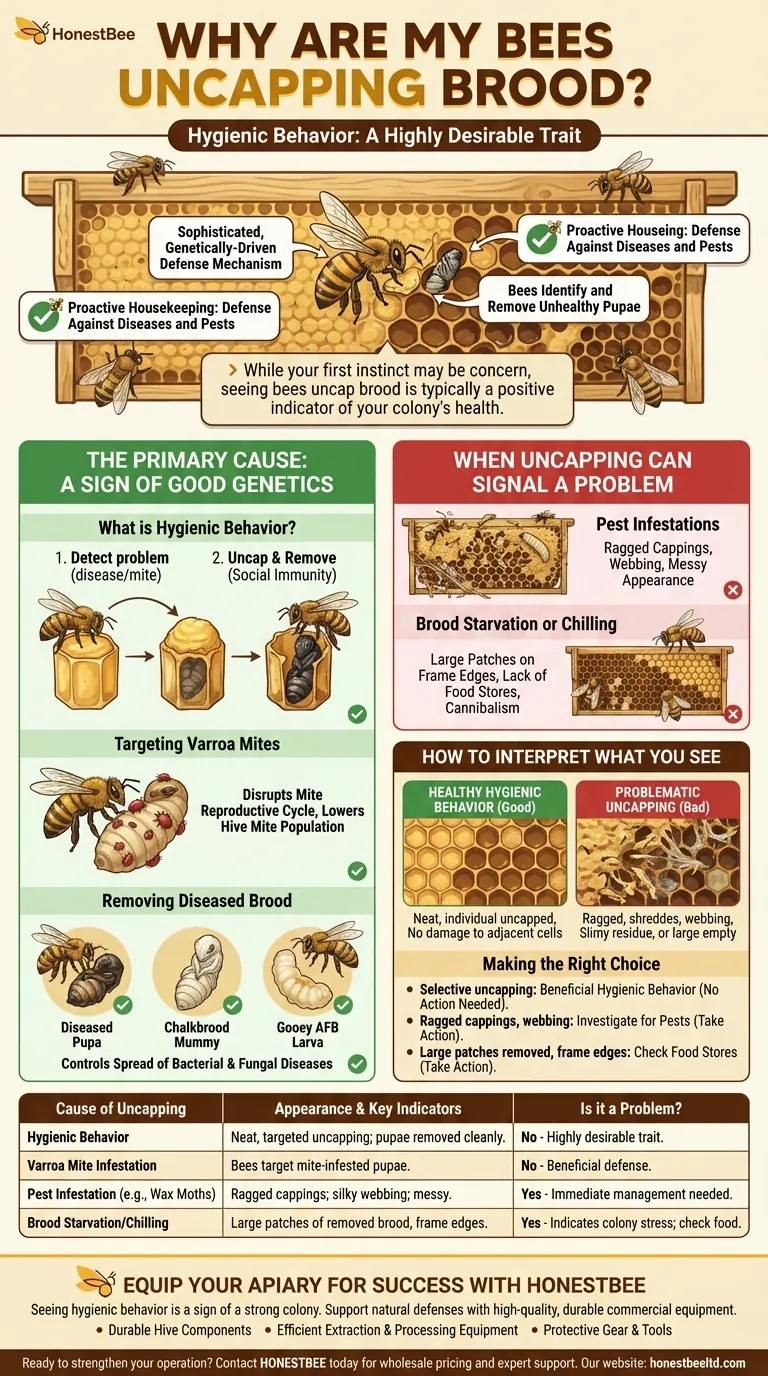
Related Products
- Adjustable Formic and Acetic Acid Dispenser for Bee Mite Treatment
- Varroa Easy Check Mite Tester Kit Counter Alcohol Wash Jar
- Black Plastic Beetle Barn Hive Beetle Trap for Beehives
- Professional Insulated Winter Hive Wrap for Beekeeping
- HONESTBEE Advanced Ergonomic Stainless Steel Hive Tool for Beekeeping
People Also Ask
- How can beekeepers ensure their hives survive the winter? A Guide to Colony Survival
- What does Chewed Down Brood (CDB) indicate in bee colonies? A Sign of Varroa Mite Infestation
- What is the focus of hive management during summer? Maximize Your Honey Harvest with Expert Tips
- What should be done after treating a colony for varroa mites? A Step-by-Step Guide to Verifying Success
- What are the symptoms of Varroa Mite Syndrome (VMS)? Recognizing the Signs of Colony Collapse







